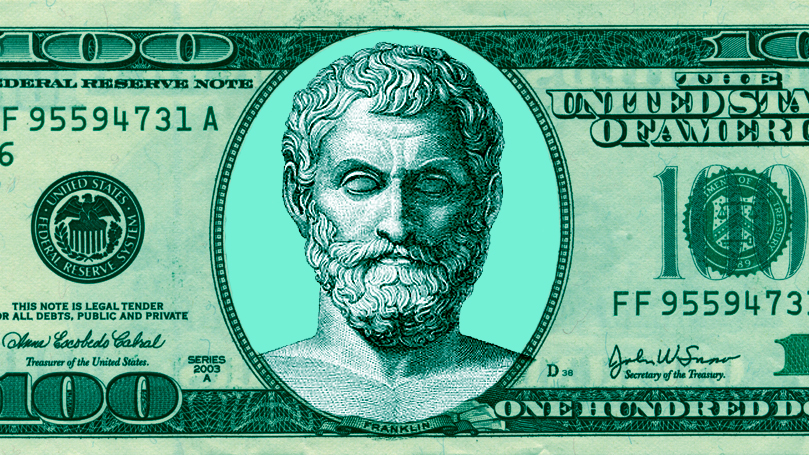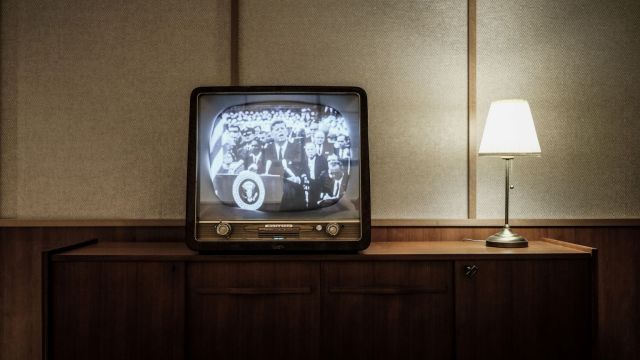Use the “money method” to beat your bad habits

- Habits are the result of our brain's plasticity. The more we do a particular action, the more our brain adapts to that behavior as the norm.
- If we want to break a bad habit or form a new habit, we need to do an action for roughly three months for it to likely stick.
- One of the best tools that can help you feel motivated to change and form better habits is money. It is a proven incentive and aid for breaking bad habits.
Everyone has done it at one time or another: feeding into our impulses to buy the latest objet du jour on social media or reaching for the items displayed in the checkout line, which leads to overspending. While a once-in-a-while purchase can be chalked up to a moment of weakness, consistently overspending is considered a bad habit. Bad habits are often the way we’ve always done things, usually representing the easy and comfortable course of action. Most of the time we don’t even know we’re doing them.
Of course, many of our habits are good — an early-morning run, “no screens before bed”, or the social and conversational niceties that make life just a bit more pleasant. But we all have our bad habits, too — those “one-off” moments that end up becoming two, then many, then a way of life.
So, how can we break these bad habits? How can we make habits work for us? Willpower and effort are required, of course, but psychology offers up many suggestions. We first should take a look at what makes a habit.
The anatomy of a habit
What exactly is the mechanism behind habit formation? And why are bad habits so hard to shift? It all starts in the brain.
Every time we do an action (or don’t do an action), certain parts of our brain will activate. A set neural pathway will light up, or leave its mark on, our brain. If you scrape a stick in the dirt enough times, it soon becomes a hole. Likewise, if you repeatedly activate a certain brain pattern, mental “trenches” are made.
Putting it simply, a one-off action becomes a habit through repetition. Our brain learns that this is the way to do things, and it naturally falls back onto that action without some higher-order command.
Let’s take one example: musicians. If someone learns an instrument, they will typically have to practice a variety of motor, auditory, and visual-spatial skills again and again. Each time they strum a chord, read a score, pull a bow, or blow a horn, their brain will be firing a certain way. Over time, these actions become second nature. Many studies have shown that this repetition literally changes our brain composition — even increasing the “gray matter volume” of the relevant brain areas.
Taking the first step
So, in order to break down bad habits, or to establish good ones, we need to do an action over and over again. It’s not entirely clear how long this might take. For some people, it could be as short as 18 days, for others it could be half a year. One study seems to point somewhere in the middle, with three months being the magic number. But what we do know is that repetition makes the brain change.
The question, then, is how do we take the first step to break a habit? And, after we start, how can we make sure we carry on?
James Clear, author of The New York Times best-selling book, Atomic Habits, puts it this way: “All big things come from small beginnings. The seed of every habit is a single, tiny decision. But as that decision is repeated, a habit sprouts and grows stronger. Roots entrench themselves and branches grow. The task of breaking a bad habit is like uprooting a powerful oak within us. And the task of building a good habit is like cultivating a delicate flower one day at a time.”
You need to motivate yourself to carry on doing an action. After time, that action will become easier, and eventually second nature. With money being one of the biggest motivating factors in our lives, we should think about how money can potentially be the driver to help you quit those bad habits.
Money as a habit helper
Money often comes into play as an easy and workable answer to avoiding a habit or building a good one. It might be that governments do it for you, with “sugar taxes” or increased duties on cigarettes and alcohol. But it could also start at home. You’ve likely heard of the “swear jar” aversion strategy, or have seen it featured in at least one TV show or movie. It’s the idea that every time you say a bad word, you put some kind of financial penalty in a box or jar. But you can also use it to build positive habits, like paying yourself a salary to tidy your house, giving yourself $5 every time you call your mom, or buying yourself a present every week you go without sugary drinks.
There’s a body of evidence to suggest that when we offer financial incentives, people are much more likely to kick their bad habits. An analysis by Floor van der Brand looked at the example of smoking. The analysis found that “financial incentives effectively increase smoking cessation rates.” In one study, participants were offered €350 worth of vouchers if they “quit smoking successfully.” They found that monetary incentives were “positively and directly associated with quit success.” It also increased the likelihood of adopting other quitting strategies like medication or stop-smoking program enrollment.
So, if you’re needing to motivate yourself to start a new habit that replaces your bad ones, money could potentially be your driver for change. Over time, that new action will become easier. Ideally, you’ll reach the point when you no longer need the financial incentive. The habit becomes second nature.





